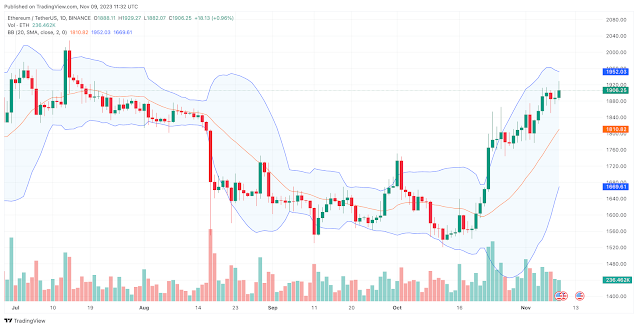Introduction to Tronscan
In the ever-expanding landscape of blockchain technology, Tronscan emerges as a pivotal platform, offering users a comprehensive suite of tools to interact with the Tron blockchain seamlessly. With its array of features and intuitive interface, Tronscan plays a crucial role in empowering users to explore, manage, and participate in the Tron ecosystem efficiently.
What is Tronscan?
Tronscan serves as a blockchain explorer and wallet interface tailored specifically for the Tron blockchain. It provides users with access to real-time data, smart contracts, transactions, and addresses on the Tron network. Essentially, Tronscan acts as a gateway to the decentralized world of Tron, offering transparency and accessibility to users worldwide.
If you are interested visit Tronscan, Click Here.
History and Background
Tronscan traces its origins back to the early days of the Tron project, founded by Justin Sun. Since its inception, Tronscan has evolved significantly, keeping pace with the rapid growth and development of the Tron ecosystem. From its humble beginnings to its current status as a leading blockchain explorer, Tronscan continues to innovate and enhance its features to cater to the diverse needs of users.
Features of Tronscan
Tronscan boasts a plethora of features designed to streamline user experience and facilitate seamless interaction with the Tron blockchain. Its wallet functionality allows users to securely store, send, and receive TRX and other TRC-10/TRC-20 tokens. Additionally, Tronscan serves as a comprehensive blockchain explorer, enabling users to track transactions, monitor account balances, and explore smart contracts effortlessly. The platform also facilitates voting for Super Representatives, empowering users to participate in governance and decision-making within the Tron network.
How to Use Tronscan
Getting started with Tronscan is straightforward. Users can create an account within minutes and gain access to a wide range of features. Once logged in, users can navigate through the intuitive interface to explore wallet functionalities, access blockchain data, and engage with the Tron community seamlessly. Whether it's checking transaction history, interacting with smart contracts, or voting for Super Representatives, Tronscan provides users with the tools they need to navigate the Tron ecosystem with ease.
Importance of Tronscan in the Tron Ecosystem
Tronscan plays a pivotal role in the Tron ecosystem by bridging the gap between users and the blockchain. Its user-friendly interface and robust features make it an indispensable tool for developers, investors, and enthusiasts alike. By providing real-time insights and access to essential blockchain functionalities, Tronscan empowers users to harness the full potential of the Tron network and contribute to its growth and development.
Security and Privacy Measures
Security is paramount in the world of blockchain, and Tronscan prioritizes the safety and privacy of its users. The platform employs robust encryption protocols and multi-factor authentication mechanisms to safeguard user accounts and transactions. Additionally, Tronscan adheres to stringent privacy standards, ensuring that user data remains secure and confidential at all times.
Tronscan's Role in Decentralized Finance (DeFi)
As decentralized finance (DeFi) continues to gain traction, Tronscan emerges as a key player in facilitating financial transactions and interactions on the Tron blockchain. Its seamless integration with decentralized applications (dApps) and smart contracts enables users to participate in a wide range of DeFi activities, including lending, borrowing, and trading, all within a secure and transparent environment.
Future Outlook and Development Plans
Looking ahead, Tronscan remains committed to driving innovation and expanding its capabilities to meet the evolving needs of the Tron community. With ongoing development efforts and strategic partnerships, Tronscan aims to enhance its feature set, improve user experience, and contribute to the continued growth and adoption of the Tron ecosystem.
Community Engagement and Support
Community engagement is at the heart of Tronscan's mission. The platform actively solicits feedback from users and stakeholders, ensuring that their voices are heard and their needs are addressed. Through community-driven initiatives, Tronscan fosters collaboration, transparency, and inclusivity, empowering users to shape the future of the Tron ecosystem.
Conclusion
In conclusion, Tronscan stands as a cornerstone of the Tron blockchain, offering users a gateway to explore, engage, and transact within the decentralized ecosystem. With its robust features, user-friendly interface, and unwavering commitment to security and privacy, Tronscan continues to redefine the boundaries of blockchain accessibility and usability. As the Tron ecosystem continues to evolve, Tronscan remains poised to play a pivotal role in driving innovation, fostering community growth, and unlocking the full potential of decentralized finance.
FAQs
How secure is Tronscan for managing digital assets?
Tronscan employs robust encryption protocols and multi-factor authentication mechanisms to ensure the security of user accounts and transactions. Additionally, users can take advantage of optional security features such as hardware wallet integration for an added layer of protection.
Can I vote for Super Representatives through Tronscan?
Yes, Tronscan facilitates voting for Super Representatives within the Tron network, allowing users to participate in governance and decision-making processes.
Are there any fees associated with using Tronscan?
Tronscan is free to use for all users. However, users may encounter network transaction fees when performing certain actions, such as sending transactions or interacting with smart contracts.
If you are interested visit Tronscan, Click Here.





























 ">
">